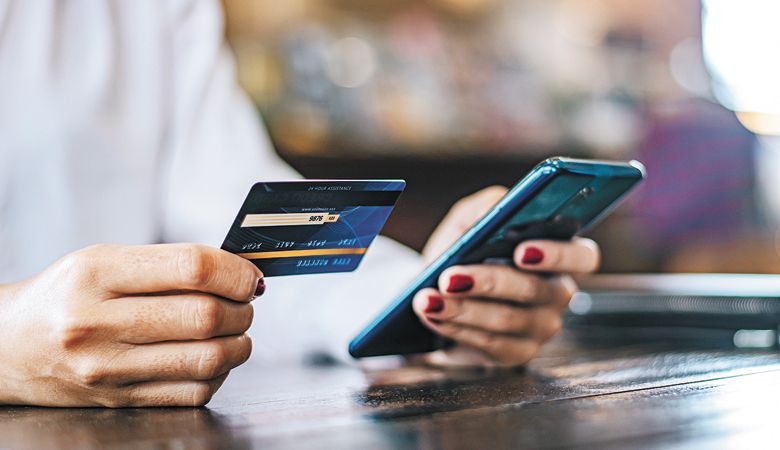Bigger Slice
Wineries aim to capture more DTC sales
Data doesn’t have to be dry. Recently, Kari Scott, marketing manager of WineDirect, and Cathy Huyghe, co-founder and CEO of Enolytics offered Oregon wineries some insights on how to increase a slice of the direct-to-consumer (DTC) sales pie, one delectable byte at a time.
Slicing and Dicing
With spring club shipments and the tasting room season underway, the dynamic duo’s Oregon Wine Symposium seminar “DTC Sales Report: Oregon Edition” proved especially timely. WineDirect delivered the data, and Enolytics provided the technology to analyze it. The two sliced and diced Oregon-specific DTC data from more than 2 million anonymized transactions totaling $700 million from 150-plus Oregon wineries over the past five years, broken out by 17 specific attributes like AVA, gender and generation.
With data as a backdrop, they directed a deep dive into Oregon’s dynamic DTC sales channels: wine clubs, events, tasting rooms (points of sale), telemarketing and websites, coupled with valuable takeaways and benchmarking strategies.
Superpowers and Opportunities
Compared to DTC sales channels in California and Washington, Scott notes Oregon’s “huge” growth in both website and club sales in 2021 over 2019. “They’re seeing just great performance of pre-pandemic levels,” she explains, “Smashing any kind of records set before — applauding the pivots that were made during 2021 — all of these new techniques, marketing operations and new strategies that were adopted are continuing to perform and succeed at bringing success to Oregon wineries.”
Conversely, telemarketing in Oregon dipped 36.8%. “Even though telemarketing is still a small piece of the DTC ecosystem,” Huyghe says, “We have seen other instances, and other geographies, where telemarketing has actually gone through the roof. So, it’s definitely an opportunity for Oregon to grow.”
Tasting rooms, traditional points of sale (POS) for Oregon wineries, also showed room for growth as tasting rooms evolve and change post-COVID. “What we’ve learned through COVID is that the experience needs to be different,” Huyghe says. “The offerings need to be different and even can get really specific around the profile and the generation of people who walk through your door.” This means boosting average order value (AOV) — the average dollar amount spent each time a customer places an order — in tasting rooms experiences through careful curation, rather than applying blanket approaches.
Wine clubs emerged as another Oregon success story, both in membership growth and retention. “We’re looking at 41, almost 42 months on average for an Oregon wine club member,” Scott says. “Again, back to applauding Oregon for some exceptional club programs, and seeing that as just as comparable just about to California rates as well.”
Takeaways
One key takeaway from the presentation underscores the importance of data capture. Interestingly, average order values go up as data capture increases. “We looked at the top 10% of wineries that do a really good job of capturing customer data,” Huyghe says. “If a customer comes in and they spend $100 in the tasting room, and the winery captures the data, they’re going to expect an additional $60 spent by that customer in other channels, especially online. For the bottom end of the spectrum, if that same customer comes in and spends $100 in the tasting room, but the winery does not capture their data, they’re only going to see an additional $10 in online sales.”
The other key impression showcased the importance of benchmarking successful DTC performance programs, based on data capture attributes and sales channels. For example, Oregon boasts a larger female DTC customer base. “They’re underrepresented in Oregon, relative to men,” Huyghe says, “But the numbers are growing faster for women… Gen Z, interestingly, is who you’re going to see most often walking into an Oregon tasting room. However, Gen X buys the most through wine clubs.” Meanwhile, older generations prefer purchasing through wine clubs.
“Those are different people,” Huyghe stresses. “They’re different cohorts, and they want to be spoken to and communicated differently in different language, not only customizing the language to different cohorts, generationally and gender speaking, but also according to which platforms you use the language that you use as far as the platforms that we communicate.”
Climate Impacts
Finally, some interesting opportunities emerged regarding DTC sales, geography and climate impacts. “Especially with Oregon wineries,” Scott says. “There’s a really large percentage of consumers who are prioritizing environmental efforts.”
According to Scott, shopping exclusively online for both residents and non-residents proves about 87% more efficient than in-store shopping with regards to CO2 emissions and vehicle miles traveled. However, “when folks are using online shopping to supplement in-store shopping,” she says, “it’s at that point, you’re essentially turning one shopping trip into two. So that efficiency equation is dramatically altered.”
Distance also alters the impact on climate and sales. For non-residents who turn to online shopping, the average Oregon wine shipment distance between 2020 and 2021 averaged 1,004 miles. For Oregon residents, most visitors travel to wineries and tasting rooms from nearby Portland, Vancouver and Seattle. “This becomes relevant when you think about things like doing last-minute flash sales, for example, and you want to create the offers that go out only to people who live within a 20-mile radius of the winery,” Huyghe explains. “That’s an interesting use-case for looking at something like this.”
Ultimately, Huyghe encourages wineries to get curious about the climate impact question and open dialogues about the importance of environment vs. speed and efficiency. “Maybe your customers across the country have different ideas or different priorities,” she concludes, “or are willing to be inconvenienced as long as they know that there’s some return coming from the environmental point of view.”










